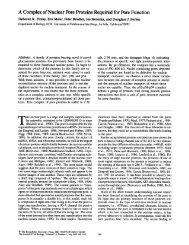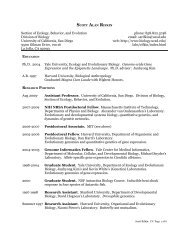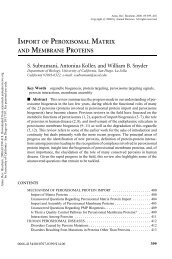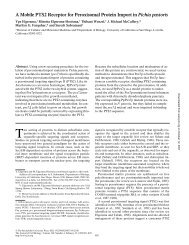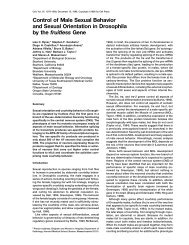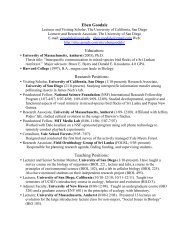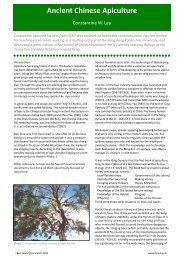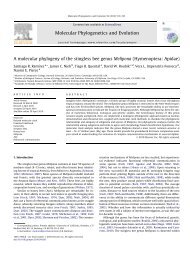Bee Basics - USDA Forest Service - US Department of Agriculture
Bee Basics - USDA Forest Service - US Department of Agriculture
Bee Basics - USDA Forest Service - US Department of Agriculture
You also want an ePaper? Increase the reach of your titles
YUMPU automatically turns print PDFs into web optimized ePapers that Google loves.
to excavate wide tunnel systems in which they build their nests, hence theircommon name <strong>of</strong> carpenter bee.Carpenter bees are not always well-behaved pollinators. Occasionally, whena flower has a long throat that places the nectar out <strong>of</strong> reach <strong>of</strong> its tongue, thecarpenter bee uses her sharp mouth parts to cut a slit at the base <strong>of</strong> the flowerwhere the nectar is stored. She then drinks the nectar without coming near thepollen dispensing anthers or stigma <strong>of</strong> the flower. Thus, carpenter bees can benectar robbers that cheat the flower instead <strong>of</strong> doing it a service in return forits nectar. Bumble bees are also capable <strong>of</strong> floral larceny. Look at the trumpethoneysuckles, horse mints, or abelias in your garden. You may find the telltalesigns <strong>of</strong> these attacks, flowers with their throats slit by thirsty carpenter bees.Small carpenter bees in the genus Ceratina are related to the larger carpenterbees, although you would never mistake them because <strong>of</strong> the size difference.They nest in pithy stems, such as blackberry brambles or roses rather thandigging their own..A female large carpenter bee (Xylocopavirginica) slits the corolla base <strong>of</strong> atrumpet vine (Tecoma stans) gainingaccess to nectar otherwise unavailablewith its relatively short mouthparts.17



